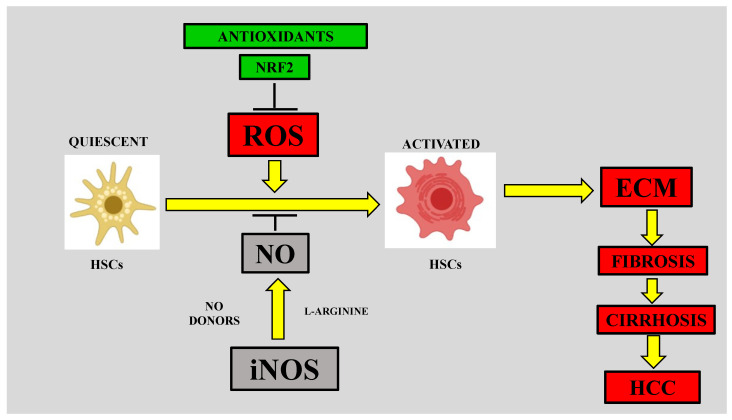Figure 1.
Reactive oxygen species (ROS) can induce the activation of hepatic stellate cells (HSCs), leading to the deposition of extracellular matrix (ECM) proteins, fibrosis, cirrhosis, and hepatocellular carcinoma (HCC). ROS promote the activation of HSCs from a quiescent state, which is the ECM-producing phenotype; in turn, ECM deposition leads to fibrosis, cirrhosis, and eventually HCC. Antioxidants, nuclear factor-E2-related factor-2 (NRF2) and nitric oxide (NO) seem to play antifibrotic roles by inhibiting ROS-induced HSC activation. Inducible nitric oxide synthase (iNOS) can synthesize large amounts of NO in the liver, utilizing L-arginine as a substrate.

